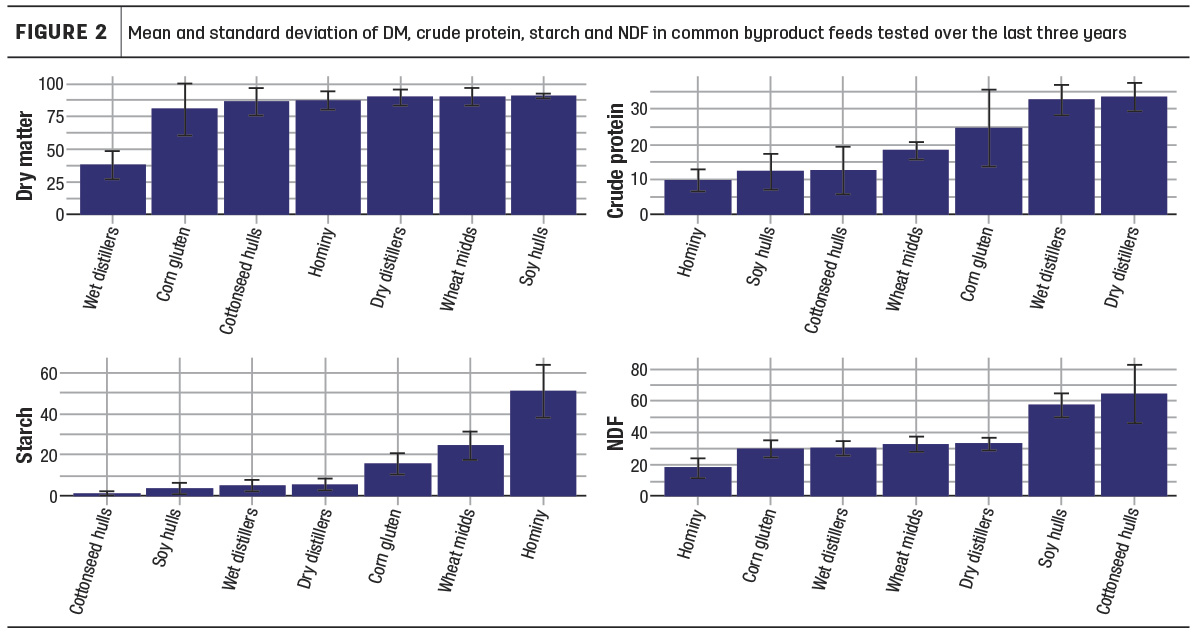The latest USDA report shows cattle inventories down 3% from 2022, with levels nearing 2013 lows. However, the USDA reports from October show 1% growth from 2022 levels. So even with a smaller 2023 calf crop, we are seeing increased cattle numbers. This means that feed inventories are likely increasing.
As we see cattle numbers rebound, the questions regarding how feed inventory and markets will respond to increased demand are still lingering. This is coupled with higher cattle prices and ongoing drought conditions in much of the U.S., which can be observed in the latest U.S. Drought Monitor map (Figure 1). This may have some producers considering the best direction for their herd when faced with pasture shortages. Confining cows and cow-calf pairs is a strategy used by some producers to help stretch forages and maintain the cow herd when pasture is no longer available. Although there are considerations to weigh when evaluating this management style, it is a viable option in many situations.

Overwintering cattle on stored feeds, mostly forage, is not a foreign concept. In fact, most producers do this to some extent. When forage inventory is limited, moving to a full or partial confinement system can have its advantages. Feeding in confinement usually involves feeding either a partial or total mixed ration (TMR) along a bunk line and, depending on geographic location, may involve cows housed in covered or uncovered dry lots. The implementation of a mixed ration allows producers to utilize cheaper raw byproducts, which may help decrease ration costs.
Utilizing what’s available
As corn markets continue to soften from 2022 highs, corn and corn byproducts may be an increasingly viable resource to manage ration costs. In traditional pasture settings, it can be difficult to supplement these feeds while ensuring that all cows receive the feed equally. Outside of corn products, utilizing a mixed ration can also be a way to supply regional byproducts that may be locally available in different geographic locations – such as brewers grains or bakery byproducts. These feeds can be a great source of cost-effective nutrition; however, it’s worth noting that these feeds can be highly variable. Figure 2 illustrates nutrient content and variation observed in analyzed byproducts.
When managing cow-calf pairs, there is some skepticism about the ability and success of confinement systems – due to space, health and nutrition concerns. However, with the right setup, these systems can work quite well, and calves can benefit from being raised in this manner. Advantages include early exposure to mixed rations and bunk line feeding, which is hypothesized to help transition calves to feeding operations. In addition, this familiarization may help with the weaning process.

Getting started
When confining cow-calf pairs, additional bunk space is needed for the calves, which will start experimenting with TMR as early as a week old. The current recommendation is an additional 18 inches of bunk space for each calf. Once the calf is older, a creep area is recommended to help ensure they receive a nutrient-dense ration that fulfills their requirements. Alternatively, some producers opt for a semiconfinement system where calves are given ad libitum access to pastures through a creep gate while cows remain confined. With proper feeding space, resting space and protection from the elements, calves can also be raised successfully in this type of system.
There are many benefits to a confinement system, but there are also considerations to weigh when making the management decision. One of the first and largest is the needed infrastructure to support this system. Not only are pens, feedbunks, water, shelter and shade needed, but additional feed handling and mixing infrastructure may also be needed – all of which comes at a cost to the producer. If a TMR or partial mixed ration is prepared on-farm, a mixer wagon is needed. Proper feed storage for ingredients is also essential to maintaining the quality of the feed and minimizing feed shrink. Purchased feed is an added cost; however, despite drought conditions keeping forage costs high in many areas, if producers are purchasing expensive forages, the ability to mix in other low-cost ingredients can be an advantage.
Feeding cows in confinement can cause feed intake to surge. Mature cows have a large rumen capacity and can eat large amounts of feed, which drives costs up. There are different strategies to manage intake, including bulkier, low-energy-density rations, which fill up the rumen while still providing the necessary nutrients. Another alternative is limit-feeding cattle a more nutrient-dense ration. When implementing the second strategy, cows may seem discontented or hungry, but it will still provide the needed nutrients and has been used successfully on many farms.
Don’t overlook the necessities
It is also critical to still provide the necessary roughage to maintain a healthy rumen environment – roughly 0.5% of bodyweight is the suggested minimum. If limit-feeding cows, keep in mind that rumen upset or bloat can be a factor due to the grain content of these rations. Managing starch levels and feeding ionophores are potential strategies to reduce this risk. It’s also important to leave room for an adaptation phase with any ration change. Providing the cow’s rumen appropriate time to adjust to major ration changes will decrease the likelihood of digestive issues.
Although moving to a confinement system with cows or cow-calf pairs is a big decision, it can offer an edge when certain factors are at play. These systems offer a viable option to help producers manage sustained periods of low forage availability and high forage prices. Combined with the unknown availability of replacement animals, this may be the key to success in 2024. Several resources are available for those interested in pursuing this type of system, outlining the potential layout and design options as well as further considerations for these programs.








